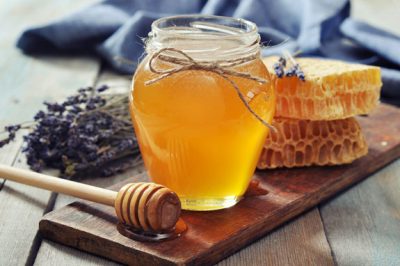Overconsumption of sugar is one of the fatal flaws of the Standard American Diet.
Natural sugar sources—such as fruits, juices, and high-sugar vegetables like carrots and beets—are an essential and healthful part of a balanced diet. After all, glucose (the type of sugar naturally found in the foods you eat) is a primary energy source for your body and brain’s cells.
But sugar can also pose serious risks to your health, especially when consumed in the form of refined sugar, high-fructose corn syrup, and other modern monstrosities. As we’ve covered in a past article, refined sugar hides behind many names, so always check the ingredient labels of packaged foods carefully.
The most well-known effect of sugar overconsumption is weight gain—as evidenced by the fact that a whopping 37.9% of American adults are obese.[1] And sadly, obesity is just the beginning of sugar’s ill effects. Research shows that sugar worsens high blood pressure, leaches nutrients from the body, and suppresses the immune system. And because sugar is highly inflammatory, it has been linked with the development of nearly every major disease, including cancer,[2] heart disease,[3] diabetes,[4] liver disease,[5] high cholesterol,[6] and more.
The good news is that there’s a perfectly sweet alternative to sugar that’s far more healthful: honey. While moderation is still always a good idea, the simple act of replacing sugar with honey will work wonders for your health.
Let’s take a look at what makes honey so different from sugar.
Whole foods are always best
It’s easy to lump all sweeteners in the same category, but remember: honey is a whole food made by bees, while sugar is an extract of the sugarcane plant (the isolated component is technically called sucrose).
We’ve written a lot in the past about the folly of trying to isolate variables in complex systems—it’s what makes allopathic medicine so short-sighted and side-effect-riddled, and it’s why whole foods are superior to individual compounds. Things are nearly always best when left in their natural form.
Sweeteners are no exception. Honey is a remarkably complex substance made up of hundreds of different compounds—macronutrients and micronutrients, prebiotics and probiotics, enzymes, and various components of which we barely have an understanding. It even has twenty-five different kinds of “sugar,” including sucrose, glucose, and fructose, as well as more complex sugars like melezitose and erlose.
For reasons that researchers haven’t yet fully deciphered, the “sugars” in honey don’t have the same negative health effects as isolated sucrose, as long as they remain an integrated part of honey’s complex chemistry. In fact, honey has actually been shown to improve some of the very health conditions that consuming sugar can cause.
For example, one double-blind, randomized clinical study demonstrated that, contrary to sugar, honey had a positive effect on appetite hormones (ghrelin and peptide YY), as well as glucose response.[7] Another study published in The Journal of Medical Food compared honey to both dextrose and sucrose, and found that honey consumption can lower C-reactive protein, homocysteine, and plasma glucose, even in diabetic and hyperlipidemic individuals.[8] There’s even reason to believe that honey can reduce triglyceride levels, weight gain, and fat accumulation.[9]
How to get the most out of honey
As miraculous and healthful as honey can be, it’s important to remember that not all store-bought honey is equal. Here are a couple principles that will help you get the most out of honey.
Always choose raw honey. As we’ve already mentioned, whole foods are always best when left in their natural, unprocessed form. When honey is heated, processed, or filtered, a large percentage of its beneficial nutrients and components are destroyed or altered.
When left in its raw form, honey is packed with enzymes that can heal the immune system and boost disease resistance, as well as beneficial bacteria that can help balance your digestion and microbiome health. Researchers have demonstrated that the replication of Lactobacillus acidophilus and Lactobacillus plantarum bacteria (both of which are centrally important for healthy microbiome composition) is increased up to 100 times by honey (compared to sucrose).[10]
Eat local honey. If you’re interested in honey’s famed allergy-healing benefits, be sure to eat local honey, which will contain traces of the pollen from local allergenic plants. In addition to providing homeopathic exposure to allergens (thus fortifying the immune system and decreasing allergic reactions in the future), honey also contains an enzyme called diastase, which some researchers and experts believe will help fix the immune dysfunctions associated with allergies.
Try Manuka honey for extra healing benefits. As we covered in a past article, some varietals of honey have particularly powerful antimicrobial properties—and Manuka honey is the king of them all. It’s been shown to destroy over 250 different strains of bacteria (including MRSA),[11] as well as a wide range of viruses and harmful fungi.
References
[1] https://stateofobesity.org/obesity-rates-trends-overview/
[2] http://www.sciencedirect.com/science/article/pii/0306987783900956
[3] http://ajcn.nutrition.org/content/86/4/899.short
[4] https://jamanetwork.com/journals/jama/article-abstract/199317
[5] http://www.journal-of-hepatology.eu/article/S0168-8278(07)00427-8/abstract
[6] https://www.ncbi.nlm.nih.gov/pmc/articles/PMC2673878/
[7] https://www.ncbi.nlm.nih.gov/pubmed/21504975
[8] https://www.ncbi.nlm.nih.gov/pubmed/15117561
[9] https://www.ncbi.nlm.nih.gov/pubmed/21310307
[10] https://www.ncbi.nlm.nih.gov/pubmed/10849275






